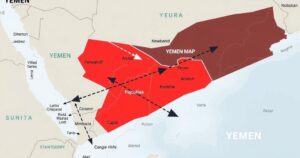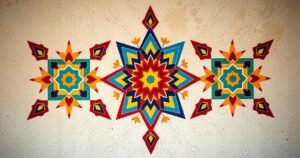Humanitarian Crisis: Fleeing Violence in Sudan for Safety in South Sudan

The Joda border crossing between Sudan and South Sudan remains a pivotal route for thousands fleeing violence in Sudan. Individuals, including families and students like Hamed Attaher, seek refuge in South Sudan as the humanitarian crisis deepens, exacerbated by ongoing conflict. Humanitarian organizations are providing critical assistance, yet challenges persist with resource shortages, particularly impacting displaced populations in informal settlements and healthcare facilities.
At the Joda border crossing between Sudan and South Sudan, the flow of displaced individuals continues unabated. The proximity of borders is stark, with just a hundred meters separating the two nations; welcomed by flags on the Sudanese side and a bilingual sign marking the entry point into South Sudan. Women are seen walking with their children, balancing their possessions atop their heads, while families transport carts drawn by donkeys filled with essentials, all propelled by a desperate need to escape the ongoing conflict in Sudan.
Hamed Attaher, a 26-year-old technology student from the University of Khartoum, expressed relief upon arriving in South Sudan, stating, “Today, I feel like I am in a safe place.” After a year of travel from Khartoum, he looks forward to reuniting with his aunt in Juba. The situation is critical, as South Sudan faces a humanitarian crisis with thousands fleeing violence. Over 12.5 million people in Sudan have been displaced since the beginning of the war in April 2023, with 5,000 individuals crossing into South Sudan daily in early December as the conflict escalates between the Sudanese Armed Forces and the Rapid Support Forces.
At the border, the International Organization for Migration (IOM) processes arrivals as either refugees or returnees, the latter being individuals who return to South Sudan after having previously fled due to the 2013 civil war. As South Sudanese welcome their Sudanese neighbors, humanitarian workers assert, “We are one people because we call the Sudanese side ‘North Juba’ and the South Sudanese side ‘South Juba’.” UNHCR tents provide shelter and emergency food, catering to those awaiting further travel to reunite with family members.
Those requiring medical attention are categorized by urgency at the IOM checkpoint, with Médecins Sans Frontières (MSF) handling critical cases. Recently, an ambulance transferred a severely underweight infant to Renk County hospital for immediate medical assistance. Individuals often proceed independently to informal settlements springing along the route to Renk, establishing makeshift communities, while others utilize organized transportation to reach nearby towns facilitated by the IOM.
Attaher boarded one of the IOM trucks, joining other displaced individuals for the next segment of his journey. MSF has reported over 110,000 arrivals in Renk County since December, with many fleeing precarious conditions in settlements like Gosfami. The hospital has been prepared for an influx of patients, providing care for both refugees and local population members, indicated by MSF doctor Atem Deng Ajak’s remark that, “Here, we treat Sudanese refugees, the local population and South Sudanese returnees.”
In the Renk County pediatric ward, two premature twins born to Bakhita, a 22-year-old mother, receive care in separate beds after a challenging birth amid dire circumstances. The mother expressed gratitude for their birth in South Sudan, underscoring the struggles of displaced families. Another displaced individual, Amna, illustrates the arduous journey undertaken, stating, “The SAF and the RSF started fighting, so we took a donkey and a cart and left. We walked for 20 days until we reached safety.”
In addition to medical assistance, MSF provides psychological support for families affected by trauma, where professionals engage with mothers and children coping with distress. The humanitarian crisis is compounded by diminishing resources, notably following a reduction in the humanitarian budget from USAid due to prior funding freezes. MSF’s operations had to briefly cease amidst funding adjustments, impacting critical services for displaced populations.
Currently, Ajak focuses on care for the youngest victims of the crisis, ensuring mothers receive nutrition to support breastfeeding. He poignantly noted, “We are feeding the twins’ mother so she can produce milk, but in the end, only God can help us.” The gravity of the situation underscores the challenges faced by humanitarian organizations in alleviating the suffering of those caught in this harrowing conflict.
In summary, thousands are fleeing violence in Sudan to seek refuge in South Sudan, contributing to an escalating humanitarian crisis. With over 12.5 million displaced individuals and ongoing conflict, humanitarian organizations are mobilizing resources to provide essential support. The experiences of those like Hamed Attaher and Bakhita exemplify the resilience of the human spirit amidst displacement, yet underscore the urgent need for extensive assistance and safety for all affected populations.
Original Source: www.theguardian.com








